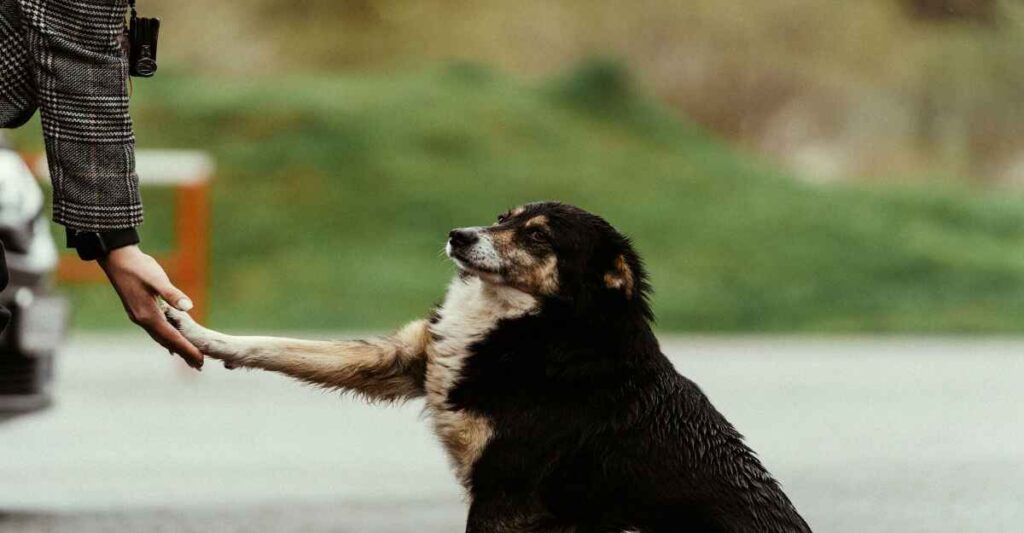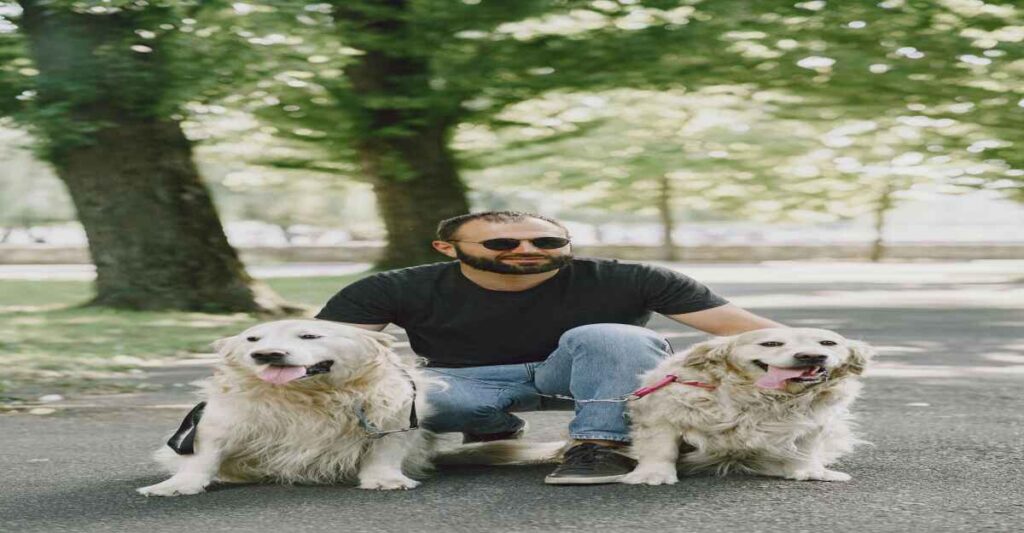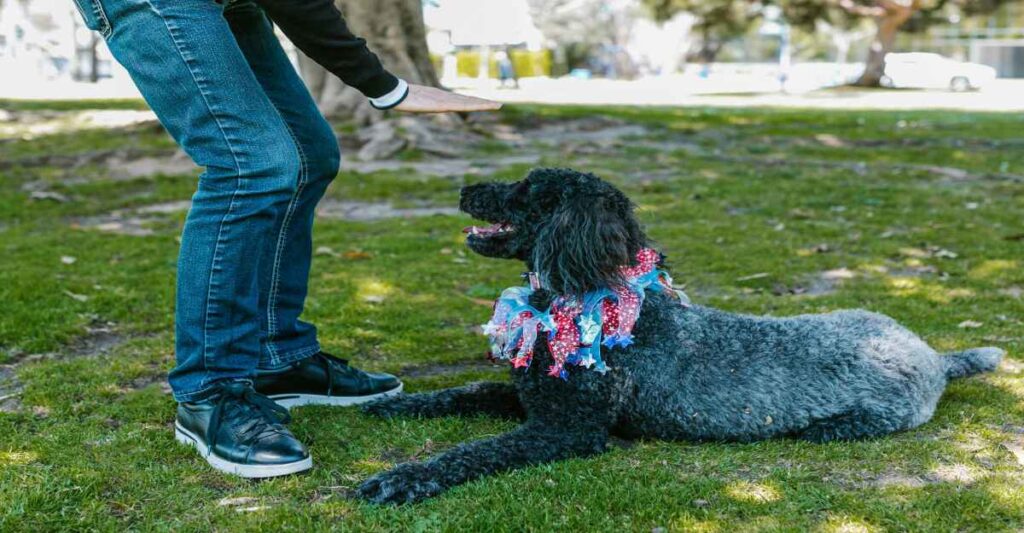Why You Should Teach Your Dog Basic Obedience Commands
Training your dog isn’t just about showing off cool tricks.It’s about safety,understanding and building a stronger bond.Teaching basic obedience commands for dogs like“sit”or“come” makes your daily life smoother.You don’t need a fancy setup or special tools—just some time,treats and consistency.
Think about those everyday moments—walking down a busy street,guests arriving or dropping food on the floor.A well-trained dog handles these situations calmly.When your dog knows basic obedience dog training commands,it becomes easier to prevent issues before they start.This helps avoid jumping on people,running into traffic or barking non-stop.
And if you’re raising a puppy,it’s even more important.The basic obedience commands for puppies lay the foundation early.Puppies learn fast and respond well to structure.So, whether you’re working with a new pup or teaching an older rescue,starting with these commands is the smartest move you can make.
Why Basic Training Commands for Dogs Matter
You may wonder,“Why not just let the dog be a dog?”Because structure builds trust.A dog who understands basic training commands for dogs feels secure.It knows what’s expected and learns how to behave in different environments.This confidence cuts down on stress and misbehavior.
Also,it’s not only about your comfort.It’s about theirs too.Commands like“stay”or“leave it” can literally be lifesavers.A dog darting into the street or chewing a poisonous plant won’t have a chance if they don’t listen.The most important commands to teach your dog give you control when it matters most.
Plus,good training minimizes frustration for both of you.Imagine a world where your dog walks beside you without pulling,stops barking on cue or calmly greets guests.That’s possible when you introduce the 7 basic dog commands and practice them daily.

Core Commands Every Dog Should Know
Sit – The Starting Point of Obedience
“Sit” is usually the first of the basic dog commands to teach.It’s simple,but powerful.When your dog sits,it’s choosing calm over chaos.You can use it to interrupt jumping,begging or other unwanted behaviors.All you need is a treat,a bit of patience and your voice.
Hold a treat near your dog’s nose and slowly move it upward.As their head follows,their bottom naturally goes down.The moment it touches the ground,say “sit” and give the treat. Repeat.Soon,they’ll sit even before you ask.
This command teaches impulse control.It’s the core of basic dog commands training,setting the tone for more advanced obedience later on.
Stay–Teaching Control and Patience
“Stay”is where things get real.It builds your dog’s self-control and teaches them to pause even when excited.This is one of the most valuable basic dog commands and hand signals to master.It’s useful during meals,opening doors or crossing the street.
Start small.Ask your dog to“sit.”Then say “stay,”step back one foot and wait a second.If they don’t move,reward them.If they do,calmly reset.Slowly add more distance and time.Use a hand signal—a flat palm in front of their face—to reinforce it.
With practice,this becomes one of the most important commands to teach your dog.It’s not flashy,but it’s powerful.A strong“stay”can stop accidents and give you peace of mind,whether at the park or at home.
Come–The Lifesaving Recall Command
This is the command that could save your dog’s life.“Come”means return to you no matter what.Whether they’re chasing a squirrel or wandering too far off-leash,this is one of the basic commands to teach puppy early and reinforce often.
To teach recall,start indoors.Get excited,kneel,open your arms and say“come.”When your dog reaches you,reward big.Use treats,praise or play—whatever makes them eager to repeat it.Practice in different settings with added distractions.
Eventually,test it outside with a long leash.A reliable“come”command is the backbone of basic obedience commands for dogs,especially for adventurous or energetic breeds.
Down–Encouraging Calmness and Trust
“Down”goes beyond simple control—it’s about creating a moment of peace.Teaching your dog to lie down on command helps in situations where calm behavior is needed,like at the vet,during family dinners or when visitors arrive.Among the basic dog commands to teach, this one signals to your dog that it’s time to chill out.
Start with your dog in a sitting position.Hold a treat close to their nose,then slowly lower it to the floor.As their body follows,drag the treat forward along the ground.The moment they lie down fully,say“down”and reward.Repeat several times until they link the word with the action.
This command is one of the more effective basic obedience commands for dogs, especially high-energy ones.It builds focus,reduces anxiety and shows your dog that staying calm brings rewards.It’s also the base for more advanced obedience commands for dogs,like“roll over”or“stay down.

Leave It–Keeping Dogs Safe from Harm
Dogs are curious.They’ll chew on socks,eat dropped food or sniff around dangerous areas. That’s why“leave it”is critical—it teaches them to ignore something even when they really want it.Of all the basic obedience dog training commands,this one can prevent emergency vet visits.
Place a treat in your closed hand and let your dog sniff.As they try to paw or lick,say“leave it.”.The moment they back off—even slightly—reward with a different treat from your other hand.Gradually move to placing the treat on the ground while covering it with your foot or hand.Over time,increase difficulty and add real-world temptations.
This skill creates trust.It shows your dog you’ve got better options and they don’t need to act on impulse.Among the basic obedience and training commands for dogs,this one promotes safety, restraint and respect—things every dog should learn.
According to VCA Animal Hospitals,basic commands every dog should learn promote safety and communication.
Heel–Walking in Harmony
Daily walks shouldn’t feel like a tug-of-war.“Heel” is about walking calmly beside you,not dragging you down the sidewalk.It teaches dogs to pay attention to you while ignoring distractions.If you’ve ever been yanked by a leash,you know why this is one of the most practical basic dog commands training methods to master.
Start with your dog on a leash.Hold a treat in your hand next to your leg and say“heel.”As they walk beside you,reward every few steps.Stop when they pull. Resume only when they return to position.Over time,reduce the treats and add turns,stops and distractions.
This command creates pleasant walks and builds mutual respect.For young pups,it’s one of the best basic obedience commands for dogs to begin with,especially in busy environments. It also sets the stage for advanced obedience commands for dogs like off-leash walking or agility training.
Tips to Make Training Stick
Training isn’t just what you teach—it’s how you teach it.Dogs respond best to consistency,timing and rewards.Here’s how to keep your sessions effective and fun:
- Use positive reinforcement: treats, praise,toys or playtime.
- Keep sessions short (5–10 minutes) but frequent.
- End on a success.Even a small win helps your dog stay motivated.
- Avoid punishment.It damages trust and can lead to fear-based behavior.
- Use clear basic dog commands and hand signals for better understanding.
- Gradually add distractions to test how well your dog has learned.
Training isn’t a one-time thing—it’s ongoing.The more natural these basic commands to teach puppy or adult dogs become,the easier your life gets.
When Training Hits a Wall: Overcoming Common Challenges
Not every session goes smoothly—and that’s normal.Some dogs get distracted,bored or simply don’t seem interested.You might wonder if they’ll ever“get it.”Here are a few common obstacles and how to handle them:
- Distractions:Train in quiet spaces first.Slowly introduce distractions like other dogs,people or toys.
- Stubbornness:Find your dog’s motivation.Some love food.Others prefer toys or praise.
- Plateaus:If progress stalls,switch up the routine.Try new treats,new locations or review past commands.
- Mixed signals:Keep commands and tone consistent.Everyone in the household should use the same words and gestures.
Persistence beats perfection.If you’re using the correct basic obedience commands for dogs and staying patient,your dog will improve—even if it takes longer than expected.
.
Knowing When It’s Time for a Pro
No matter how many strategies you try,progress can occasionally stall.A competent dog trainer can assist in this situation.If your dog shows signs like aggression,fear,excessive barking or simply ignores every command,it might be time to look into basic obedience dog training commands taught in a more structured environment.
Group classes provide structure,socializing and professional feedback.These are especially helpful for puppies learning the basic dog commands for puppies in a stimulating setting.For dogs who require one on one care due to anxiety or certain behavioral problems,private sessions are ideal.
Expert trainers also provide information into advanced basic obedience commands for dogs,helping build a stronger bond and opening up new possibilities like agility,service tasks or off-leash reliability.Do not wait if your dog is slamming into a wall or you are stressed.You will experience results sooner if you get care as soon as is practical.
Final Thoughts to Keep You (and Your Dog) on Track
Mastering the basic obedience commands for dogs is not just about creating an obedient pet it’s about raising a calm,confident and safe companion.These commands serve as your everyday arsenal,influencing how your dog engages with you and the outside environment..
Start early stay consistent and always keep the experience positive.Every command you teach,from seat to heel,enhances communication and strengthens your bond.Dogs want to understand us.It is our job to speak their language clearly and kindly.
Remember,every dog is unique.Some will learn fast,others will need more time.That’s okay.Whether you’re starting with the basic commands to teach puppy or refining skills with an adult dog,the key is patience and practice.
You don’t need to be perfect,you just need to show up.
Once your dog knows these commands,it becomes easier to stop your dog from biting or chewing out of anxiety or frustration.
FAQs
1. What are the 7 basic dog commands?
The 7 basic dog commands are Sit,Stay,Come,Down,Leave.It Heel and No.Mastering these ensures your dog is well-behaved and safe in most situations.
2. When should I start training my puppy?
Start as early as 8 weeks old.The sooner you begin teaching basic obedience commands for dogs and puppies,the faster they adapt to good behavior.
3. Can older dogs learn these commands too?
Absolutely While pups may catch up faster,older dogs can still learn all basic training commands for dogs with consistent and positive reinforcement.
4. How often should I train my dog?
Train in short 5–10 minute sessions,2–3 times a day.Focus on repetition and reward.Work in real world scenarios and gradually increase distractions.
5. Do I need to use hand signals too?
Yes,combining basic dog commands and hand signals boosts understanding,especially in noisy environments or as your dog ages and hearing fades.

Pingback: Top 10 Proven Ways for Socializing Your Dog with Other Dogs and people